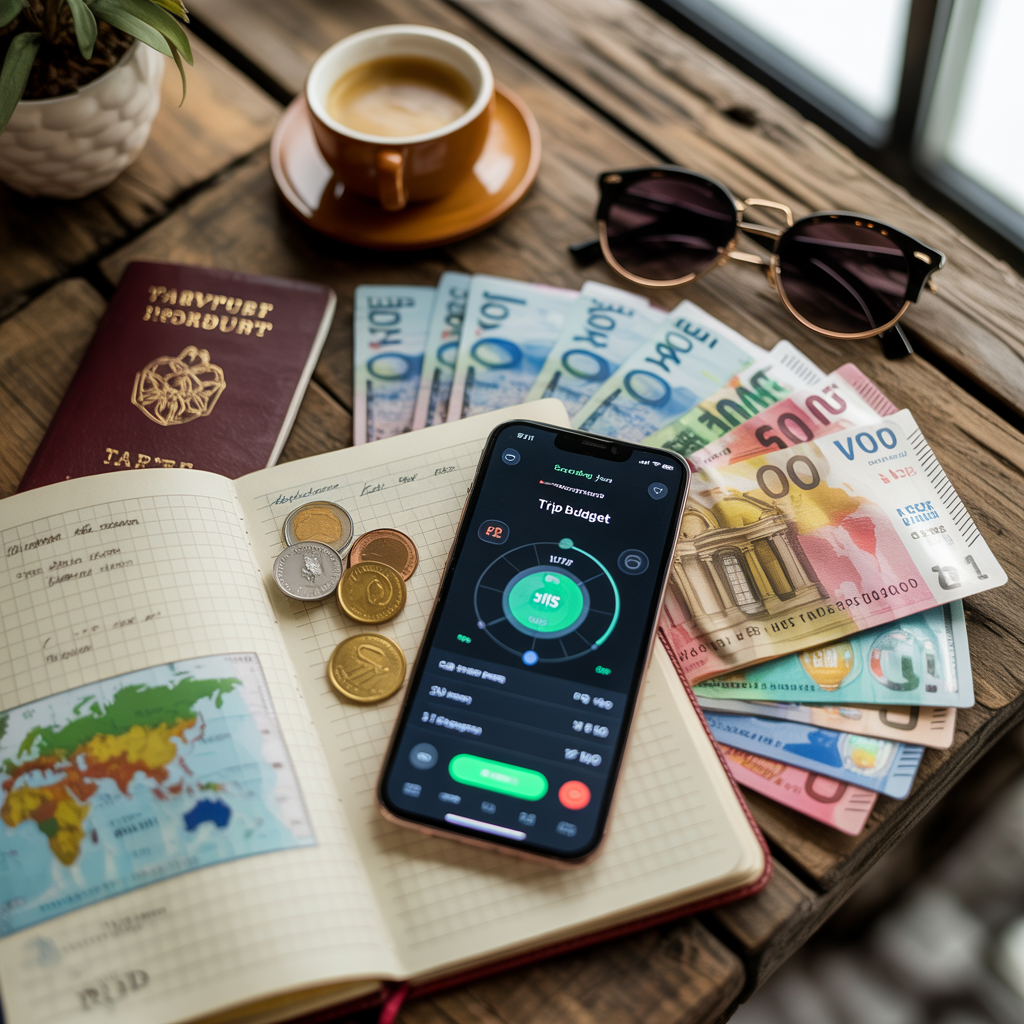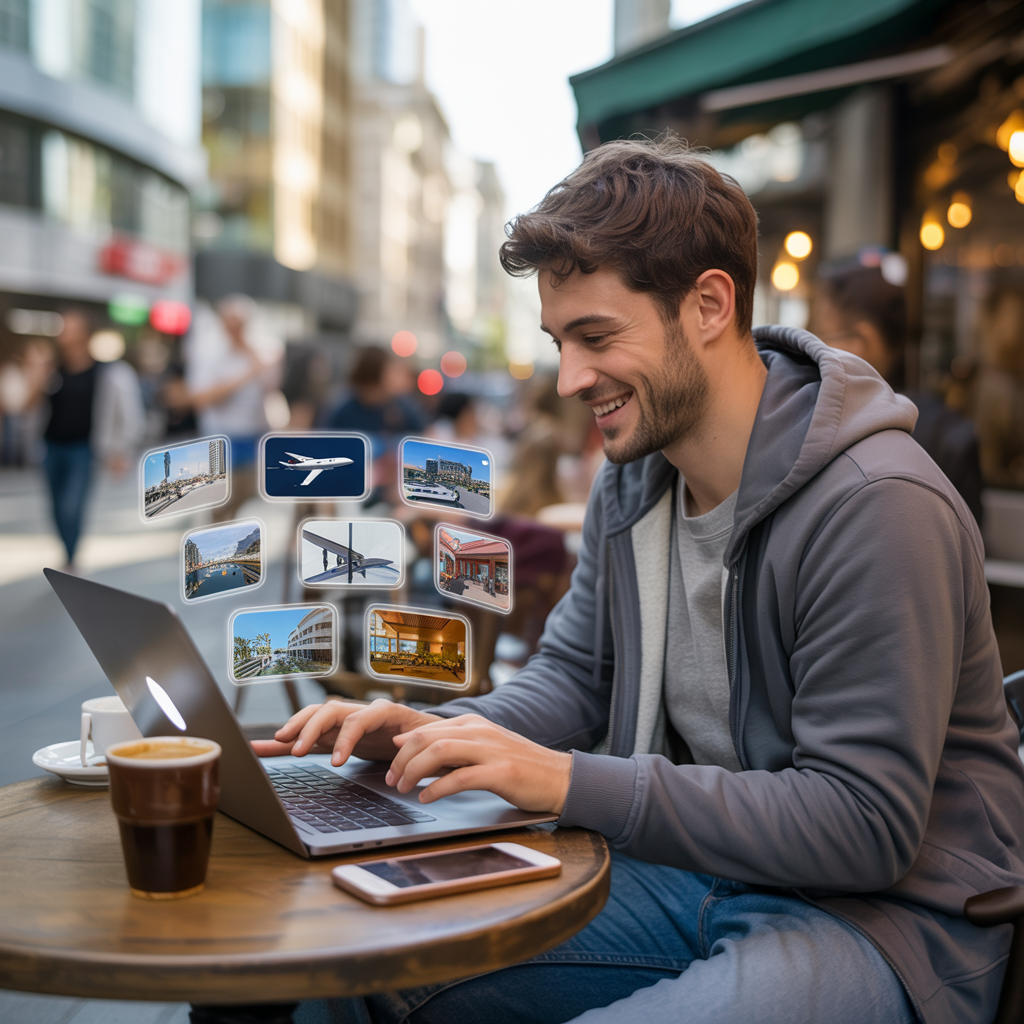The Rise of NomadGPTs: How Digital Workers Are Automating Their Travels
As technology rapidly evolves, a new trend is quietly reshaping how digital nomads and long-term travelers navigate the world: NomadGPTs. These aren’t just bots or chat tools — they’re highly customized, AI-powered assistants built with tools like ChatGPT to automate the complex, repetitive, and sometimes overwhelming aspects of life on the move.
Imagine planning an entire trip — from visa requirements to affordable accommodations — without lifting a finger. Or having a personal concierge that adapts to your travel style, learns your preferences, and anticipates your needs across time zones. That’s the promise of NomadGPTs — a fusion of digital nomadism and AI automation that’s making remote life smoother, smarter, and surprisingly more human.
As the AI wave integrates deeper into daily life, the borderless lifestyle is experiencing a revolution not just in where people work, but how they move.
🧠 What Exactly Are NomadGPTs?
At its core, a NomadGPT is a personalized AI assistant built using large language models like ChatGPT, trained or customized to help with specific travel-related tasks. Think of it as your always-available travel planner, life admin, career assistant, and cultural liaison all rolled into one.
Unlike generic AI assistants (like Siri or Alexa), NomadGPTs are trained with your specific data, travel goals, budget preferences, visa needs, dietary restrictions, and even quirks like your favorite airline or coffee chain. They can:
- Monitor visa expiration dates and alert you in time
- Suggest visa-free countries based on your passport
- Compare Airbnbs and coworking spaces by user reviews, price, and walkability
- Recommend optimal work hours based on your clients’ time zones
- Translate local phrases for casual chats with locals
- Generate expense reports or tax summaries
Platforms like OpenAI’s GPTs allow users to create these assistants without needing to code — a game-changer for tech-savvy travelers and non-techies alike.
✈️ Why Are NomadGPTs Gaining Popularity Now?
Several reasons are fueling the sudden rise of AI-powered travel automation among remote workers and travelers:
1. Overwhelm and Decision Fatigue
Planning constant relocations, researching destinations, juggling freelance clients, finding SIM cards, keeping track of time zones — it’s a full-time job. NomadGPTs reduce decision fatigue by centralizing that chaos into a calm, interactive interface.
2. No-Code Tools Are Now Accessible
Creating custom AI used to require technical expertise. But with new no-code builders like ChatGPT’s GPT builder, any user can create assistants for specific functions — whether that’s budgeting travel, finding vegan restaurants in Tokyo, or managing remote team schedules.
3. Hyper-Personalization is Becoming Standard
People want tailored experiences. AI now allows digital nomads to automate based on their lifestyle — not just use generic tools. You’re not just using a travel app; you’re designing your own.
🔧 Real-Life Use Cases from the Road
Let’s look at how NomadGPTs are actively being used by travelers and nomads:
📍 Laura, 31 – UX Designer in Southeast Asia
Tired of manually searching for visa rules every time she changed countries, Laura built a NomadGPT that checks her UK passport status against the latest visa policies via Visadb.io and alerts her about overstays.
🏨 Marco, 38 – Freelance Developer in Latin America
Marco created a GPT that syncs Airbnb listings with reviews scraped from Reddit threads and Google Maps, then sorts them by noise level and Wi-Fi reliability. No more wasted rentals.
📅 Anya, 27 – Virtual Assistant Managing Multiple Clients
Anya trained a GPT to handle scheduling across five time zones, auto-generate invoices, and remind her about co-working meetups in her city. It even drafts polite responses to flaky clients.
These aren’t hypothetical — they’re active workflows making remote life lighter and smarter.

🔄 What Can a NomadGPT Automate for You?
If you’re curious to build one or want to imagine the possibilities, here are some popular functions a well-trained NomadGPT can handle:
Logistics & Planning
- Generate travel itineraries with live flight info
- Track visa dates, Schengen limits, and renewal requirements
- Recommend off-the-beaten-path weekend trips nearby
Accommodation Research
- Scrape and compare listings (Airbnb, Booking, Hostelworld)
- Factor in coworking distance, reviews, walk scores
- Translate landlord messages or policies
Remote Work Optimization
- Manage client communications across time zones
- Track expenses and generate tax-ready summaries
- Auto-reply to emails with custom tones (friendly, formal, etc.)
Language & Culture
- Translate casual conversations and local slang
- Offer cultural tips or etiquette reminders for each destination
- Suggest local dishes, customs, or holidays worth exploring
⚠️ Ethical Considerations and Pitfalls
As with any powerful tool, AI in nomadic life isn’t without drawbacks.
- Privacy & data exposure: Feeding your travel patterns, financial info, and personal habits into an AI requires trust and protection. Use reputable tools and stay informed.
- Over-automation risk: It’s tempting to let AI run your entire travel experience, but part of the joy of traveling lies in spontaneity and surprise. Don’t outsource your sense of wonder.
- Cultural disconnect: Relying too much on AI for translation or etiquette can create a barrier rather than bridge. Use AI to supplement, not replace, genuine interaction.
🌍 Why This Matters for All Types of Travelers
You don’t have to be a full-time digital nomad to benefit from NomadGPTs. Whether you’re a tourist planning a 3-week trip, a remote worker on a “workcation,” or a retiree embracing slow travel, personalized AI assistants can enhance the experience.
Think of it this way: for years, travel apps solved specific needs (like currency exchange or packing lists). NomadGPTs are bringing holistic integration, acting as a central brain for your journey.
They’re not just tools — they become companions. And that’s where travel tech is headed.
🧳 What’s Next: A Glimpse into the Future of AI-Powered Travel
As AI becomes more integrated into the fabric of life, the travel world will continue to evolve:
- AI travel agents will dynamically rebook your trips based on weather, delays, or even your mood
- Personalized “country onboarding” assistants will guide you through cultural dos and don’ts upon arrival
- Automated networking GPTs will help nomads find community events and new collaborators wherever they land
The rise of NomadGPTs is just the beginning. The question isn’t whether AI will change the way we travel — but how much we’ll allow it to.
One thing is certain: we’re entering an era where travel becomes less about logistics, and more about presence.
🔗 Further reading & useful tools:
- Create your own GPT with OpenAI
- Nomad List – data and communities for remote workers
- Visadb.io – visa and remote work policy tracker
- Reddit r/digitalnomad – real experiences, recommendations, and tools in action
Related Post: AI for Travel Planning













